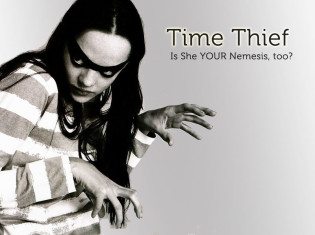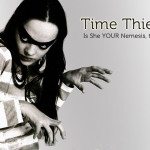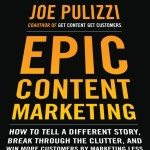One of the things I have my clients do over the course of our time together is create a persona (or three) for their customers’ Big Challenge/Desire. (It’s part of the Biz Story Outline.)
We ask the question:
We need to know the answer because it helps us tell better stories about how we fix those problems.
Remember my Starter Recipe for writing marketing copy? The 2nd ingredient is knowing exactly Why the problem hasn’t (yet) been solved.
Let’s look at my business, for example.
I’ve identified almost a dozen evil characters that stop you — and sometimes me! — from getting our marketing done.
I wrote about one of those villains awhile back (remember the evil robots?) and the post was much more engaging because I focused on showing (not telling) my readers how something as innocent as automating your marketing can “kill” your efforts.
It wasn’t a Game of Thrones epic by any stretch, but it was better than a straight lecture on why you should rethink all that automating.
Let’s face it. Stories with conflict or drama are the ones we tend to enjoy most.
 Stories where everything is light and love, rainbows and unicorns — with zero evil to battle — are a bit yawn-inducing. Even a romantic comedy needs to employ some level of credible challenge to hold our interest.
Stories where everything is light and love, rainbows and unicorns — with zero evil to battle — are a bit yawn-inducing. Even a romantic comedy needs to employ some level of credible challenge to hold our interest.
As marketers who care about building on positive messages — and who want to stay away from fear-based ones — it might feel a little weird or uncomfortable to think about your story’s villains.
If you worry that you’re manipulating your audience by poking their soft spots, you’re not alone. LOTS of us feel that way.
But if we believe that “He-who-must-not-be-named” might gain power if we speak about him, it’ll hold our marketing back from hitting its mark.
Here’s the truth: you must name the thing before you can talk about fixing it.
You don’t have to go on and on (and on) about it to get the point across. Promise. But without a villain or nemesis, your story will feel bland, contrived and flat.
 Here’s another example: A few years ago, my survey helped identify the top villain for most of you: The Time Thief.
Here’s another example: A few years ago, my survey helped identify the top villain for most of you: The Time Thief.
She apparently keeps at least 40% of you from getting your work done. (And is most likely to blame for your connections to those evil robots, too.)
I’ve used this character to talk about the nitty gritty details of implementing a marketing plan (or biz story outline). It helps my clients better understand their own challenges around time management and where those challenges come from. Is it they’ve got “too much to do” or that they just need to buckle down and prioritize?
When we talk about The Time Thief, they can look at their time management issues a bit more objectively because it’s “outside” them. Of course, consciously they “get” that conquering the Time Thief is completely within their power.
How Could You Personify (or, in one case, animalify) your customers’ problems?
Here are just three examples you might enjoy:
Caution: this one has language NSFW:
One thing you probably noticed is that these examples also help us laugh at our problems. And humor goes a long way toward making a story (or a marketing message) stand out in your prospect’s mind.
What about you and your clients? Who’s the big villain you help them conquer? Share a description or two in a link below. (And if you’ve got an image of that creep, share that, too.)











Excellent Tea. “Conflict and drama” nail it. We use that same concept in our coaching. Haven’t named the villain but going to do so now. Here’s my trade. When my participants want to genericize their target, we ask them to choose an archetype and try to use someone they know. Immediately a subset of very specific information appears and we see who they are talking about.
Yes! I do that with my clients, too. (Focusing on the Ideal Client, looking back at actual clients that we might categorize as *ideal* and building from there.) It’s a great way to help people connect the dots. Thanks for chiming in, Patrick!
I talk about the ‘Money Dementor’ with my clients … It’s the soul sucking voice from the unconscious that whispers the negative money messages 🙂
Good one, Sarah! And have you found that using that character makes it easier to talk about that issue in your marketing?
To be honest Tea, I haven’t really used it in my marketing because I haven’t really had much of a marketing plan :/ hence why I am on your site (which I absolutely love by the way). I work with money which can bring up a lot of resistance with people! I love the idea of telling stories to engage with people more and really hope to me able to do more of this!! 🙂
Hehe. Then it appears my evil plan is working! Kidding. Marketing plans (or, as we call them around here, “Biz Story Outlines,” are a constant work in progress. So glad you’re here, Sarah (and that you’re enjoying yourself). Hopefully, you grabbed that free download when you subscribed? Please don’t hesitate to reach out if you get stuck. I’m happy to answer questions. 🙂
Thanks so much Tea!!! Am not sure I saw the download. What was it again? 🙂
The Biz Story Framework (template). If you don’t have it, go ahead and email me and I’ll send it to you again.
Yeah, could You send me it please Tea. What’s your email?
I didn’t want to use this because I saw a lot of people in my line of work already doing it (giving cute names to creativity blocks), and I’d like to have a more original take on things, but I see the value of it.
I actually like to personify my blocks because it helps me deal with it and have some kind of interaction with them (and given my self-help background, I know these blocks are all parts of me that just want me to be safe from harm).
Now I just need to find a unique way I could use it in my content… 🙂
Isn’t it funny that the creative folks figured this out early? I *totally* understand why you’d want to be different. (I’m right there with you!) You can probably still find a way to personify things without using cute names. Perhaps you just call the villain what it is: The Critic. But then when you talk about that issue, you can do so as if it’s an actual person. For an example of this, see my post on Comparisonitis where I open with a description of how *she* plagues me. http://storybistro.com/comparisonitis/
Dang I love your writing style and approach…I realized as I read your post that I had started this process with The ContentBeastie and could do soooooooo much more with it. He’s that ever ravenous Beastie, demanding more content, for more places and keeps your fingers on the keyboard 24/7 … when there’s a billion other things you’d rather do!
Yes! LOVE this image. Going to the next step with this by creating a visual to go with your descriptions is *so* very helpful. Good job, MamaRed.
Thanks Tea…he popped out of an artist’s hands a while back and he’s so fun!